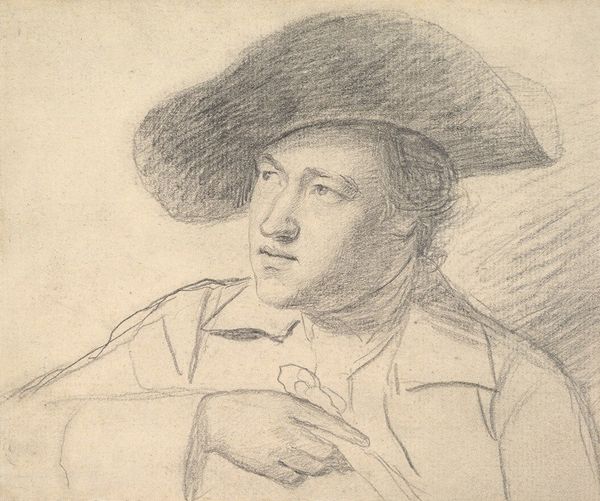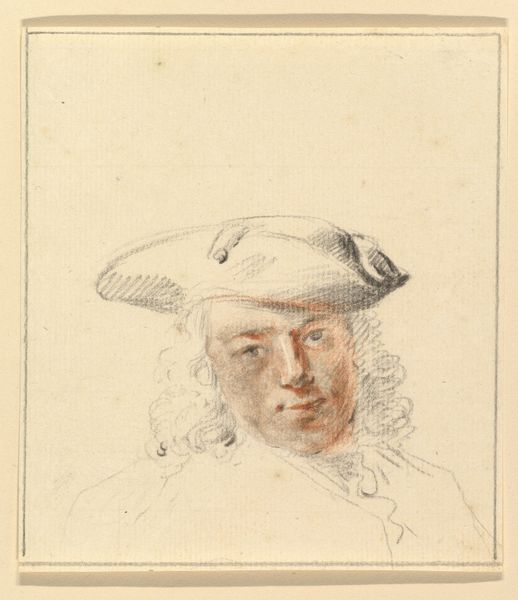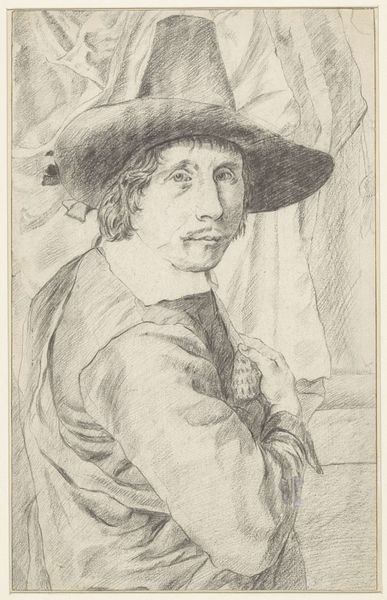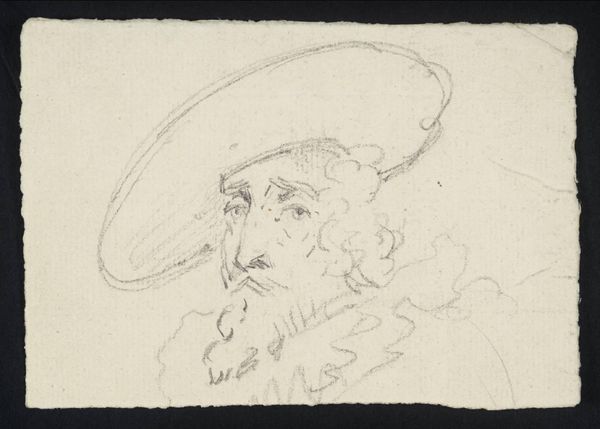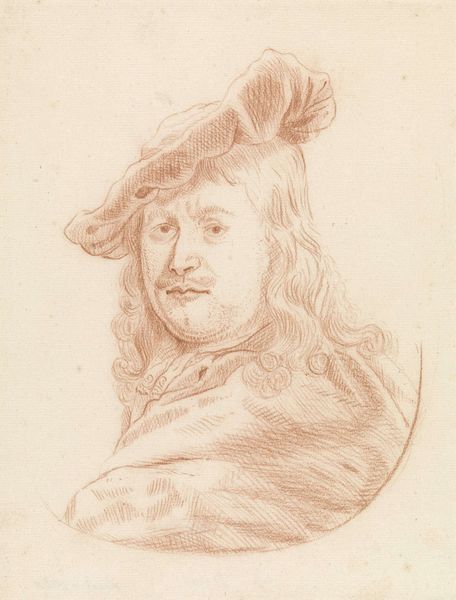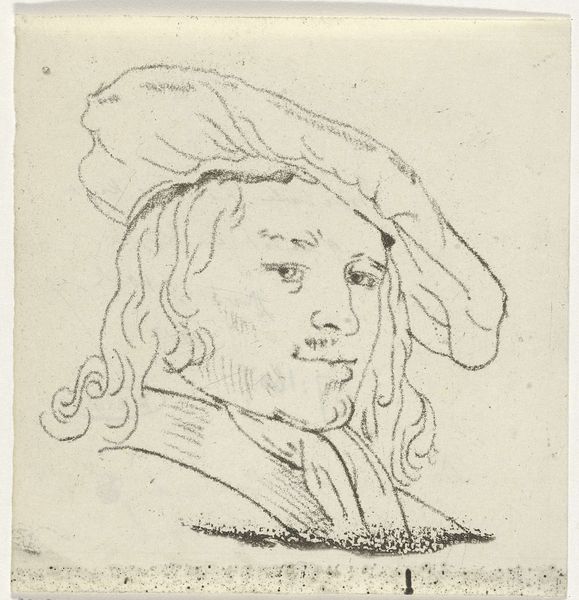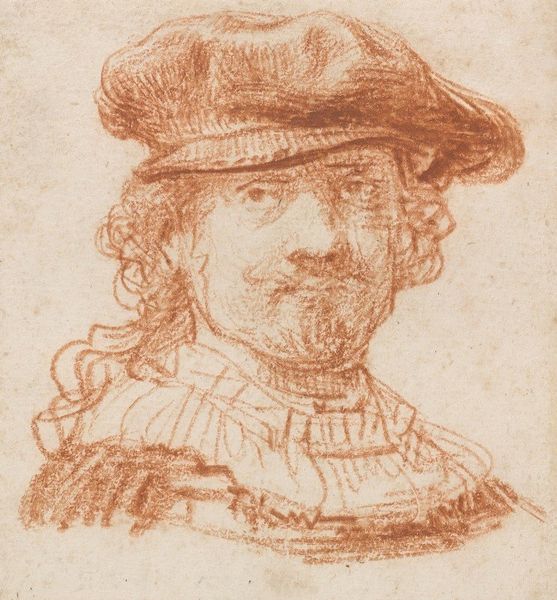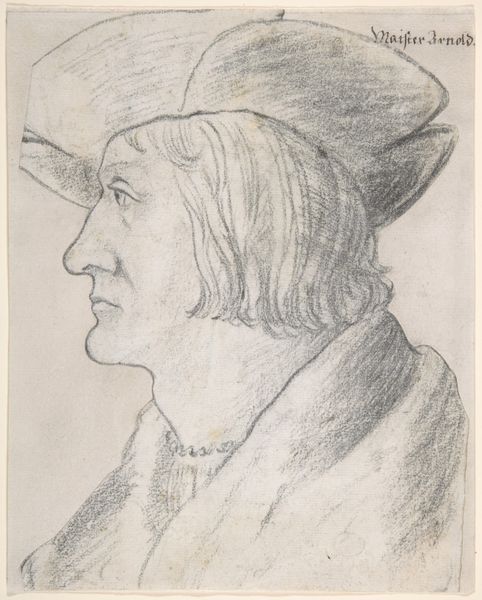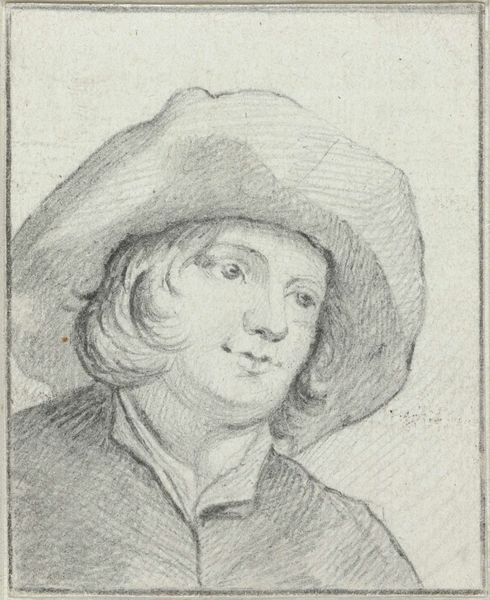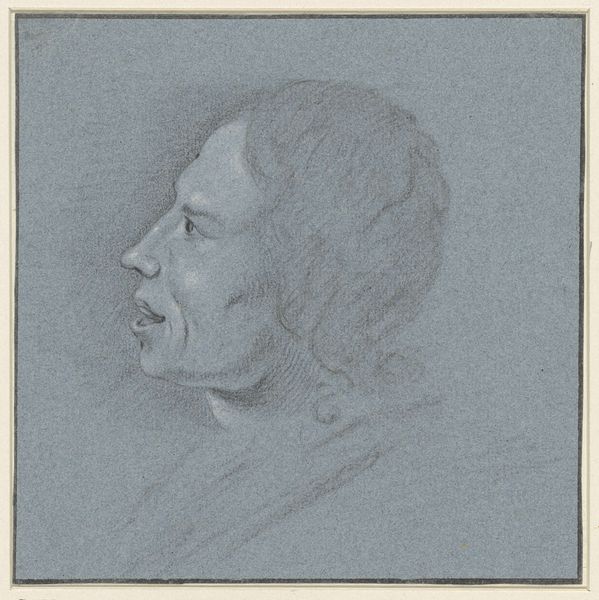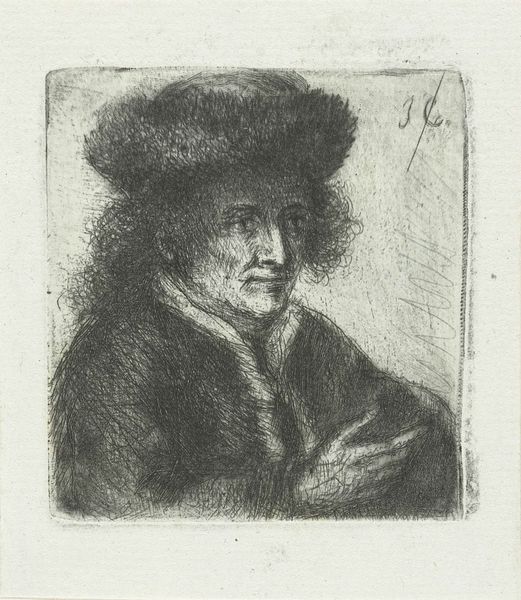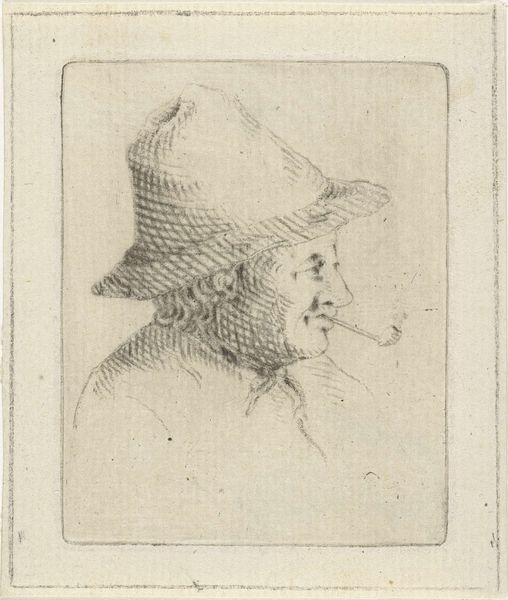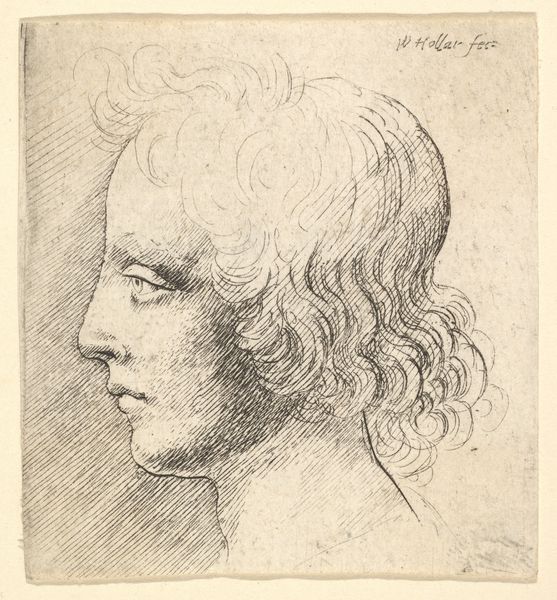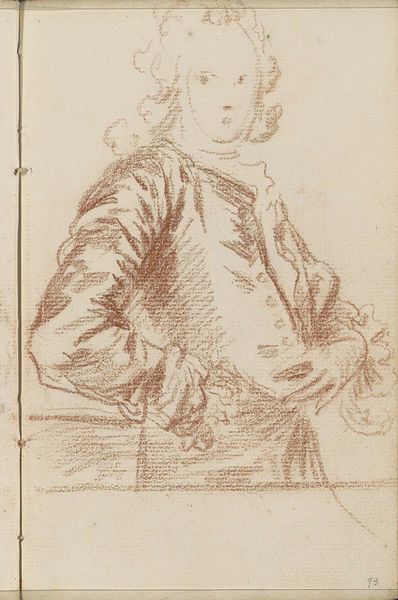
drawing, paper, pencil
#
portrait
#
drawing
#
neoclacissism
#
figuration
#
paper
#
pencil drawing
#
pencil
Dimensions: height 60 mm, width 64 mm
Copyright: Rijks Museum: Open Domain
Editor: This is a self-portrait by Jurriaan Andriessen, made sometime between 1755 and 1819. It's a pencil drawing on paper, currently held in the Rijksmuseum. There's a delicate quality to it, a sketch-like feel. What stands out to you? Curator: Consider the materiality itself. This isn't oil on canvas flaunting wealth and permanence. We have humble pencil and paper – tools accessible even to a struggling artist. This immediacy invites us to consider the artistic labor involved and the economics of art production at the time. How does the choice of these specific materials democratize the image? Editor: That’s a really interesting point. It feels more intimate because it lacks the formality of oil paint, somehow. Were drawings like this generally considered less valuable, even if skillfully executed? Curator: Absolutely. Think about the hierarchy: commissioned portraits in oil were for the elite, reflecting their status and power through expensive pigments and time-consuming production. This drawing, however, reveals a different story. Perhaps Andriessen couldn't afford or didn't have access to higher-status materials. It's an exploration of the self, made possible by these more modest means, almost an act of artistic rebellion against restrictive norms. Editor: So, it's not just *what* is depicted, but *how* and with *what*. Curator: Precisely. By focusing on the materiality and the processes inherent in its creation, we can decode the socio-economic realities influencing artistic expression. Notice, also, the details that would need to be paid attention to in terms of the sourcing of these materials. Where would someone even obtain this quality of paper or pencil? The quality has some relevance to this work. Editor: I see what you mean. I hadn’t thought about it that way. It shows me how important the choice of materials are, beyond just aesthetics. Curator: Indeed. It reframes our understanding of art historical significance, revealing that “lesser” materials can tell equally compelling, if not more revealing, stories about artistic labor and the constraints of the period.
Comments
No comments
Be the first to comment and join the conversation on the ultimate creative platform.
